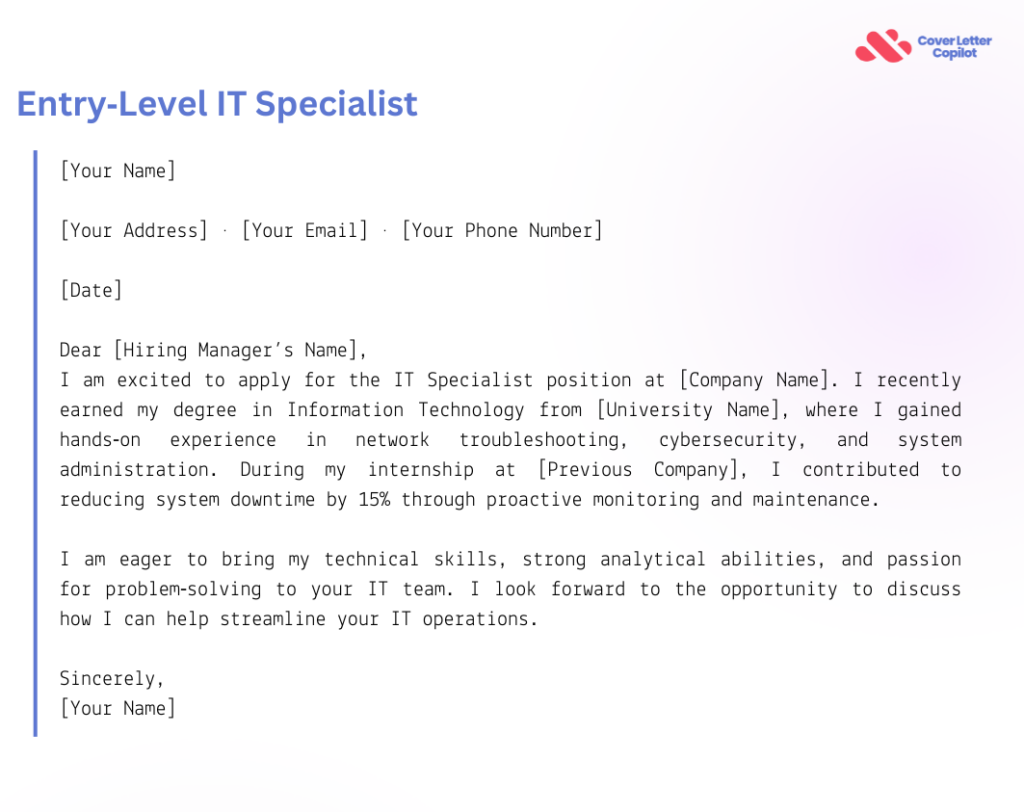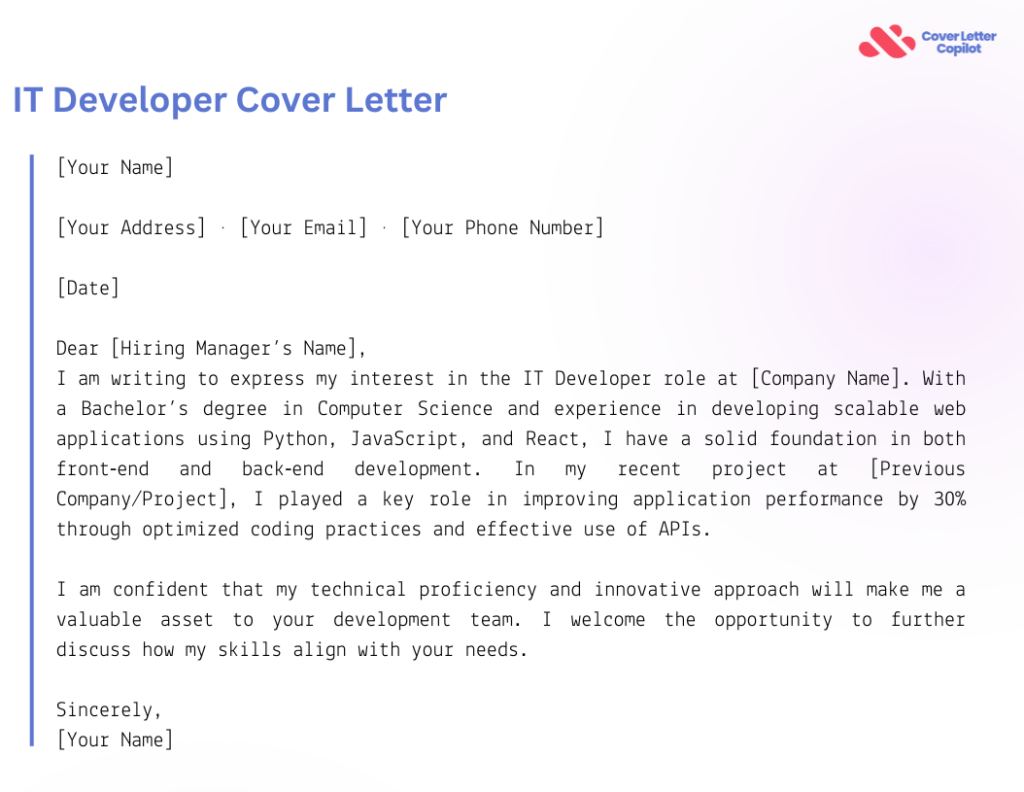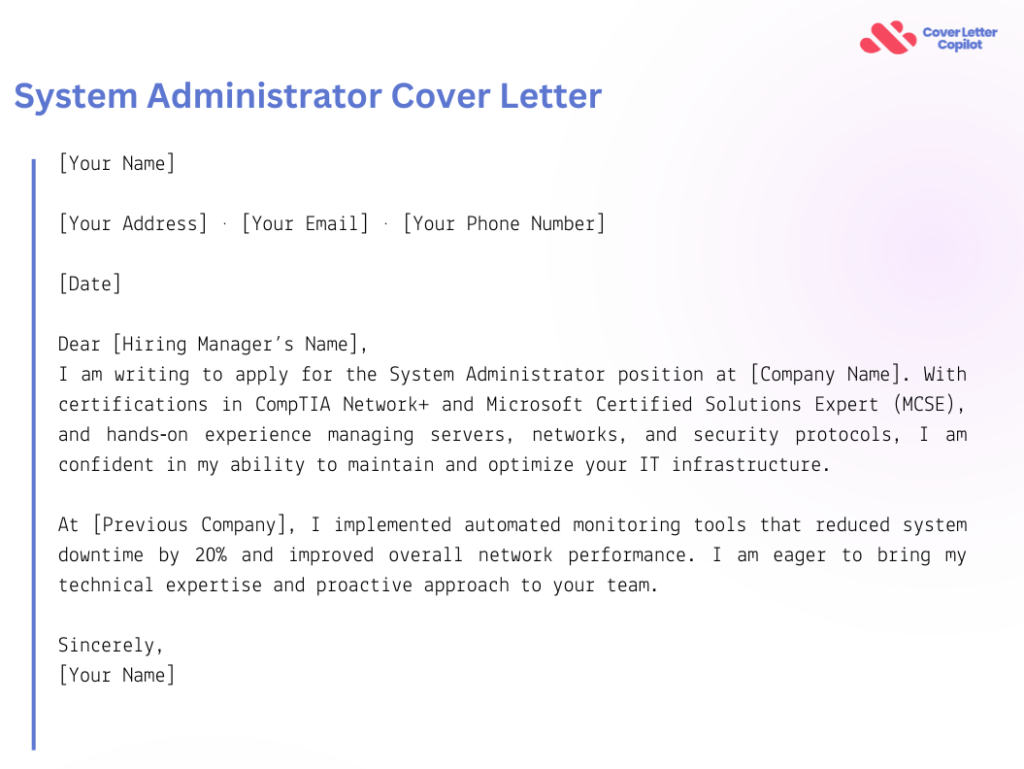In the competitive technology industry, a well-crafted IT cover letter is your chance to stand out from the crowd. Whether you’re applying for a role as an IT specialist, developer, project manager, or system administrator, your cover letter should clearly demonstrate your technical expertise, problem‑solving abilities, and passion for innovation. In this comprehensive guide, we’ll walk you through how to write an effective IT cover letter, and we’ve included multiple examples and templates to help you get started.
Why an IT Cover Letter Is Crucial
A focused IT cover letter does more than introduce you—it reinforces your technical proficiency and your understanding of the industry. Key reasons to invest time in your IT cover letter include:
- Showcasing Technical Skills: Emphasize your experience with programming languages, software, hardware, network systems, or cybersecurity.
- Demonstrating Problem‑Solving: Provide concrete examples of how you resolved technical challenges or streamlined IT operations.
- Highlighting Certifications: Mention industry certifications (e.g., CompTIA, Cisco, Microsoft) that validate your expertise.
- Tailoring Your Message: Show that you understand the company’s tech stack and can contribute to its specific IT needs.
Key Components of an Effective IT Cover Letter
An impactful IT cover letter should include:
- Professional Header:
Include your name, contact details, and the company’s information. - Personalized Greeting:
Address the hiring manager by name when possible. - Clear Introduction:
State the specific IT role you’re applying for and briefly summarize your technical background. - Body Paragraph(s):
- Technical Expertise: Detail your core competencies, such as programming languages (e.g., Java, Python), tools, and platforms you’ve mastered.
- Accomplishments: Use quantifiable metrics (e.g., “reduced system downtime by 20%”) to demonstrate the impact of your work.
- Alignment with the Role: Explain how your skills and experience directly address the company’s needs and challenges.
- Conclusion:
Reinforce your enthusiasm for the role, express your eagerness to contribute, and invite further discussion. - Professional Sign‑Off:
End with a professional closing such as “Sincerely,” followed by your name and signature (if sending a hard copy).
Step‑by‑Step Guide to Crafting Your IT Cover Letter
- Research the Company and Role:
Understand the company’s tech environment, projects, and challenges. Identify the key technical skills required in the job posting. - Outline Your Achievements:
List relevant projects, technical challenges you’ve solved, and certifications you hold. Quantify your results when possible. - Write a Compelling Introduction:
Start by stating the IT position you’re applying for and briefly summarize your technical background. For example:“I am excited to apply for the IT Specialist position at [Company Name], bringing over three years of hands‑on experience in network management and cybersecurity.” - Detail Your Technical Proficiencies:
In the body, mention specific tools, technologies, and methodologies you’re proficient in. Include real examples of your contributions. - Customize Your Conclusion:
Reinforce why you’re a great fit for the role and express your enthusiasm for a personal interview. - Review and Edit:
Ensure clarity, correct technical terminology, and a polished, error‑free final draft.

IT Cover Letter Examples and Templates
Entry‑Level IT Specialist

IT Developer Cover Letter

IT Project Manager Cover Letter

System Administrator Cover Letter

Related
How to Write a Cover Letter
How to Start a Cover Letter
What are Short Cover Letters
Job Application Letter for Fresh Graduates
Cover Letter for Internship
Conclusion
A well‑crafted IT cover letter should be tailored, concise, and directly showcase your technical skills and achievements. Use these examples and templates as a foundation, and customize them to reflect your experience and the specific requirements of the IT role you’re applying for. With the right cover letter, you can make a powerful first impression and set yourself apart in the competitive tech industry.

